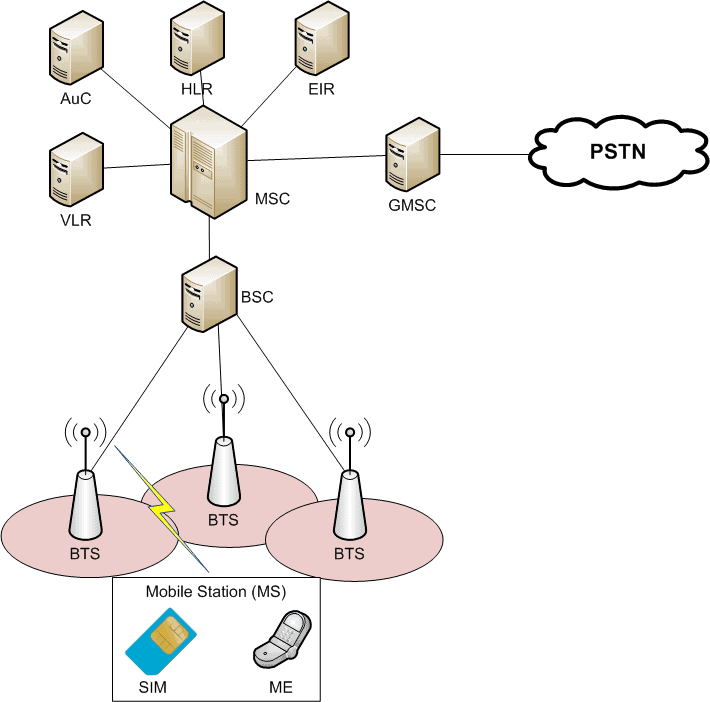The GSM network architecture is a fundamental framework that supports mobile communication across the globe. As mobile technology continues to advance, understanding the elements and functionalities of this architecture becomes increasingly important. It lays the groundwork for how mobile networks operate, from connecting calls to enabling data services. This article delves into the intricacies of the GSM network architecture, offering insights into its components, functions, and significance in today's communication landscape.
The Global System for Mobile Communications (GSM) is a digital mobile network that has transformed the way we communicate. Established in the 1990s, it has established itself as a standard for mobile telecommunications. GSM networks facilitate seamless communication through a well-organized architecture that supports various services, including voice calls, SMS, and data transmission. Understanding this architecture is crucial for anyone interested in telecommunications, technology, or mobile services.
In this article, we will explore the various components of the GSM network architecture, answer common questions surrounding its structure, and discuss its evolution in response to the growing demands of mobile users. From the core network to the radio access network, each segment plays a vital role in ensuring efficient communication. Let's dive into the world of GSM network architecture and uncover its key elements.
What are the Key Components of GSM Network Architecture?
The GSM network architecture is composed of several critical components that work together to facilitate mobile communication. These components can be categorized into three main parts: the Mobile Station (MS), the Base Station Subsystem (BSS), and the Network and Switching Subsystem (NSS).
- Mobile Station (MS): This includes the mobile device and the SIM card, which identifies the user on the network.
- Base Station Subsystem (BSS): This is responsible for radio communication with the mobile station and consists of the Base Transceiver Station (BTS) and the Base Station Controller (BSC).
- Network and Switching Subsystem (NSS): This manages the connections between mobile users and the external network, including the Mobile Switching Center (MSC), Home Location Register (HLR), and Visitor Location Register (VLR).
How Does GSM Network Architecture Facilitate Communication?
The GSM network architecture enables communication through a series of well-defined processes. When a user initiates a call, the mobile station communicates with the BSS, which then connects to the NSS to establish the call. The architecture is designed to support various services, including:
- Voice Calls
- Text Messaging (SMS)
- Data Services (GPRS, EDGE)
Each of these services relies on the efficient functioning of the different components within the GSM network architecture.
What Role Does the Base Station Play in GSM Network Architecture?
The Base Station is a crucial element of the GSM network architecture, responsible for facilitating communication between the mobile device and the network. The Base Transceiver Station (BTS) handles the radio signals, while the Base Station Controller (BSC) manages multiple BTS units. Together, they ensure that users can connect to the network, maintain call quality, and manage handovers between cells as users move.
What are the Advantages of GSM Network Architecture?
The GSM network architecture offers numerous advantages that have contributed to its widespread adoption:
- Standardized Technology: GSM provides a universal standard for mobile communications, allowing devices from different manufacturers to interoperate.
- Global Reach: With its extensive coverage, GSM networks are available in most countries, making it a reliable choice for international travelers.
- High Capacity: GSM networks can support a large number of users simultaneously, making them suitable for densely populated areas.
How Has GSM Network Architecture Evolved Over Time?
Since its inception, the GSM network architecture has undergone significant evolution to meet the changing demands of users. Some key developments include:
- Integration of Data Services: The introduction of General Packet Radio Service (GPRS) and Enhanced Data rates for GSM Evolution (EDGE) allowed for faster data transmission.
- Support for Multimedia Services: With the advent of Multimedia Messaging Service (MMS) and mobile internet, GSM networks have adapted to support richer content.
- Transition to 3G and Beyond: As technology progressed, GSM laid the foundation for 3G and 4G networks, allowing for even greater speeds and capabilities.
What Challenges Does GSM Network Architecture Face Today?
Despite its success, the GSM network architecture faces several challenges in the modern landscape:
- Increased Demand: The surge in mobile usage has led to congestion in some areas, requiring upgrades to infrastructure.
- Competition from Other Technologies: Emerging technologies like LTE and 5G pose challenges to GSM as users seek faster and more reliable connections.
- Security Concerns: As mobile networks become more complex, ensuring the security of user data remains a top priority.
Conclusion: The Future of GSM Network Architecture
The GSM network architecture remains a cornerstone of mobile communication, with its comprehensive design supporting millions of users worldwide. As technology continues to evolve, the architecture must adapt to meet new challenges and demands. Understanding the GSM network architecture is essential for those interested in telecommunications, offering insights into the mechanisms that enable our connected world.
Unraveling The Enigma Of The Can Yaman Couple
Unveiling Oleksandr Usyk's Net Worth: A Glimpse Into The Life Of A Boxing Champion
Suraj Sharma: The Rising Star Of Indian Cinema

GSM Network Architecture Detail Explanation

What is GSM and How does it Work? Electrical Technology

PPT GSM Architecture PowerPoint Presentation, free download ID4617838